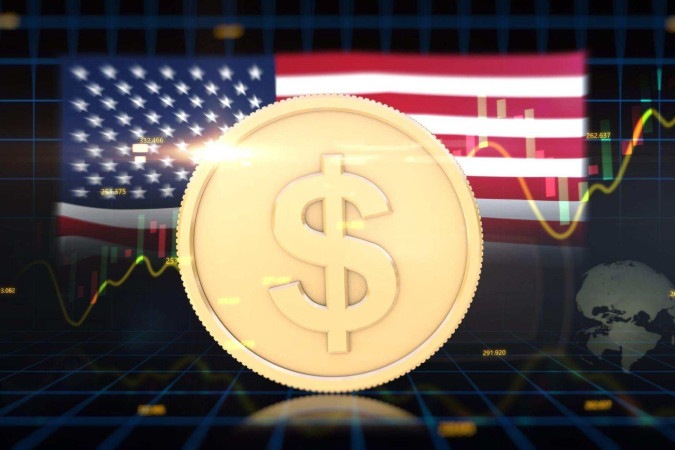Variable interest rates play a significant role in the financial decisions of millions of Americans, especially when it comes to loans and financing. Unlike fixed interest rates, which remain the same for the duration of a loan, variable rates can fluctuate over time based on market conditions and economic indicators.
Whether you’re considering a mortgage, auto loan, or personal line of credit, knowing how variable interest rates function will help you make smarter financial choices. This type of interest can appear attractive at first glance due to its typically lower initial rate. However, as economic factors shift, so too can your monthly payments — sometimes significantly.
What are variable interest rates, and how do they work?

Variable interest rates, also known as adjustable or floating rates, are interest rates that can change periodically during the life of a loan. These changes are often tied to a specific benchmark or index rate, such as the federal funds rate, the prime rate, or the LIBOR (London Interbank Offered Rate), although the LIBOR is being phased out in favor of the SOFR (Secured Overnight Financing Rate).
When you borrow with a variable rate loan, your interest rate will adjust periodically based on the movements of the chosen index. For example, if the index rate increases, so will your interest rate and monthly payments. On the other hand, if the index falls, you may benefit from reduced payments. This dynamic makes variable rates inherently less predictable than fixed rates, but they can be more cost-effective in certain market conditions.
The appeal and risks of variable rate loans
One of the biggest draws of variable interest rate loans is the low initial cost. Lenders often offer lower starting rates to attract borrowers, which can make monthly payments more affordable in the early stages. This is particularly enticing to those planning short-term use of the loan or those who anticipate refinancing before the rate adjusts.
However, the main risk is uncertainty. When interest rates rise, so do your payments. For borrowers with tight budgets or fixed incomes, this can lead to financial strain. A small increase in interest can translate into hundreds of extra dollars each month, particularly for large loans like mortgages. If market rates rise significantly over time, borrowers may find themselves facing payments they can no longer afford.
How variable rates affect mortgages and home equity lines
In the mortgage world, variable interest rates are most commonly seen in adjustable-rate mortgages (ARMs). These loans typically start with a fixed rate for a set period — often 5, 7, or 10 years — after which the rate adjusts annually based on an index plus a margin. The initial fixed period often features a lower rate than traditional fixed-rate mortgages, which is why ARMs can be popular among buyers who plan to move or refinance within a few years.
Once the adjustment period begins, however, payments can rise or fall depending on market conditions. For example, if the base index increases by 1%, and your loan has a 2% margin, your new interest rate would increase by that total 3%. Many ARMs include rate caps, which limit how much the rate can increase in a single year or over the life of the loan. Still, substantial changes in the index rate can greatly affect a homeowner’s monthly budget.
Student loans, auto loans, and personal credit under variable rates
While most federal student loans have fixed interest rates, many private student loans are issued with variable rates. These loans can start with lower rates compared to federal loans, but the future cost becomes unpredictable. This variability can be especially risky for students entering uncertain job markets or who expect longer repayment periods.
Auto loans with variable interest rates are less common but do exist. These typically appeal to borrowers with strong credit who qualify for promotional low rates, but again, any fluctuation can lead to higher monthly costs. As cars depreciate quickly, paying increasing interest on a declining asset can become financially inefficient.
The role of the Federal Reserve and economic factors
The U.S. Federal Reserve plays a central role in determining the direction of variable interest rates. By adjusting the federal funds rate — the rate banks charge each other for overnight loans — the Fed indirectly influences the rates consumers pay on variable loans. When the economy is growing and inflation is rising, the Fed may raise rates to cool spending. Conversely, during downturns, it may lower rates to stimulate borrowing and investment.
These policy decisions trickle down into the indexes used to calculate variable interest rates. If the Fed raises the benchmark rate by 0.5%, many borrowers with variable loans will see their interest rates rise by a similar margin within their next adjustment period. These macroeconomic shifts can turn a manageable loan into a financial burden — or create opportunities to save money, depending on the direction of rates.
Strategies to manage or mitigate the impact of variable rates
One effective way to manage variable rate risk is to budget with a buffer. When entering a variable rate loan, base your budget on a higher potential rate than your starting one. This gives you flexibility when rates eventually rise. Knowing you can handle a higher payment can reduce the stress of uncertainty.
Another strategy is refinancing. When rates are low or if your credit score improves, consider refinancing your variable rate loan into a fixed rate product. While this might come with fees or higher initial rates, the predictability can be worth it — especially if rates are expected to rise significantly in the future.
When does a variable rate make sense?
Variable interest rates are not inherently bad; in fact, they can be the right choice in certain situations. If you expect to repay the loan quickly, the low initial rate could save you money. Borrowers with high risk tolerance, flexible income, or a strong understanding of economic trends may benefit from the savings that variable rates offer.
They’re also appropriate for short-term financing needs. For example, if you plan to sell your home within five years, choosing a 5/1 ARM could provide significant savings compared to a 30-year fixed mortgage. The key is understanding your own financial goals, risk tolerance, and the specifics of the loan agreement.
Final thoughts on variable interest rates in the US
In the dynamic financial environment of the United States, variable interest rates remain a powerful tool — but also a source of potential risk. They offer borrowers access to initially lower rates, yet they demand vigilance, flexibility, and a solid understanding of how market forces work. Each loan product, from mortgages to student loans, responds differently to rate changes, and choosing the right one depends on your goals and risk profile.
By staying informed about economic trends, understanding your loan structure, and preparing for rate increases, you can protect yourself from the most severe impacts of rising interest. Whether variable rates are a blessing or a burden ultimately depends on how well-prepared you are for the journey ahead.



